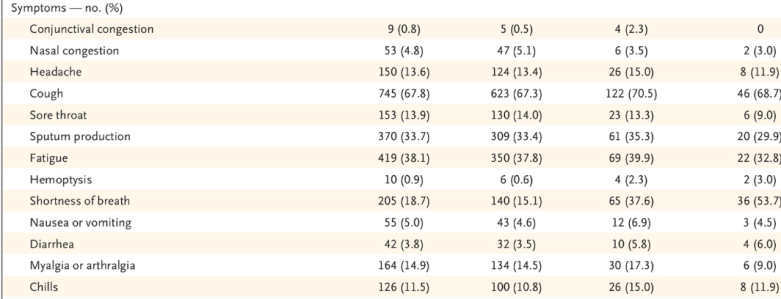
With the COVID-19 coronavirus fundamentally altering life around the world, many people are wondering whether their symptoms match coronavirus. Among those questions: What are the gastrointestinal virus symptoms that might be a sign you have COVID-19?
Compounding the anxiety: Some people aren’t sure whether their stomach pain is caused by anxiety or it’s a symptom of coronavirus (or something else.) We live in uncertain times, and we’re dealing with an unknown illness. It’s important to be vigilant about symptoms but to also keep an optimistic mindset and remember that most people with coronavirus recover from it.
The answer, now: Yes, gastrointestinal issues can be a symptom of coronavirus, but they’re not the most common symptom (you can see a breakdown later in this article). However, diarrhea, vomiting, nausea, abdominal pain, and lack of appetite have all been documented as symptoms seen in coronavirus patients.
Fever, shortness of breath, and a dry cough are among the top symptoms, however.
Coronavirus diagnosis can be tricky because the symptoms are, in many cases, very similar to the flu or a common cold. In addition, it’s hard to get testing in many jurisdictions even if you’ve traveled overseas. There’s not a known cure for coronavirus anyway, so if you think you have it, consult with your primary care doctor. Most people who get coronavirus will recover, but some survivors have described a very vicious battle with a flu-like illness.
Let’s tease out how common gastrointestinal pain is though in studies of coronavirus, with the recognition that people’s bodies handle the virus different ways. Not everyone has the same symptoms at the same stages.
“The most common symptoms of COVID-19, the disease caused by the new coronavirus, are fever, cough and shortness of breath,” according to John Hopkins Medicine. “Some patients also have body aches, runny nose, sore throat or diarrhea. If you have a sore throat and think you have been exposed to the new coronavirus, contact a health care provider by phone and discuss your risk.”
Here’s what you need to know:
Yes, Gastrointestinal Symptoms Can Be a Sign of Coronavirus, But They’re Not the Most Common Ones
First of all, just because you have gastrointestinal symptoms doesn’t mean you have coronavirus. You might have the flu, a common cold, or something else. There might be something non-viral going on of concern. Or maybe it’s anxiety. Your doctor is better equipped to tell you that (don’t take medical advice over the Internet!) But credible research studies and governmental sites have outlined the common symptoms for coronavirus. Gastrointestinal issues are among them. Also be aware that the virus has an incubation stage (symptoms appear between 2-14 days) and the symptoms themselves can take time to worsen (even 8 days or more). However, again, most people recover from COVID-19.
A new study from the Wuhan Medical Treatment Expert Group for COVID-19 appeared in The American Journal of Gastroenterology. It studied 204 people who received medical care for COVID-19. You can find the study here. The researchers found that digestive problems were far more common in coronavirus patients than other studies indicated, writing that “half of patients in our cohort reported a digestive symptom.”
They concluded: “Although most patients presented to the hospital with fever or respiratory symptoms, we found that 103 patients (50.5%) reported a digestive symptom, including lack of appetite (81 [78.6%] cases), diarrhea (35 [34%] cases), vomiting (4 [3.9%] cases), and abdominal pain (2 [1.9%] cases).”
The researchers noted:
If lack of appetite is excluded from the analysis (since it is less specific for the gastrointestinal tract), there were 38 total cases (18.6%) where patients presented with a gastrointestinal-specific symptom, including diarrhea, vomiting, or abdominal pain. Patients with digestive symptoms had a significantly longer time from onset to admission than patients without digestive symptoms (9.0 days vs. 7.3 days). In 6 cases there were digestive symptoms but no respiratory symptoms. As the severity of the disease increased, digestive symptoms became more pronounced. Patients with digestive symptoms had higher mean liver enzyme levels, lower monocyte count, longer prothrombin time, and received more antimicrobial treatment than those without digestive symptoms.
The study also found: “Curiously, our data indicate that patients with digestive symptoms in our case series rarely had underlying digestive diseases.”
The article Clinical Characteristics of Coronavirus Disease 2019 in China was published in the New England Journal of Medicine. That article noted, “During the first 2 months of the current outbreak, Covid-19 spread rapidly throughout China and caused varying degrees of illness. Patients often presented without fever, and many did not have abnormal radiologic findings.” Thus, although fever is often cited as a leading indicator of coronavirus, an absence of a fever does not mean that you don’t have it, either.
However, this study did find that the most common coronavirus symptoms were fever and cough. This study found that, while gastrointestinal symptoms could occur in coronavirus patients, they were “uncommon” (nausea or vomiting was experienced by just 5 percent of patients studied, and diarrhea was suffered by only 3.8 percent).
“The median incubation period was 4 days (interquartile range, 2 to 7). The median age of the patients was 47 years (interquartile range, 35 to 58); 0.9% of the patients were younger than 15 years of age. A total of 41.9% were female. Fever was present in 43.8% of the patients on admission but developed in 88.7% during hospitalization,” the researchers reported. “The second most common symptom was cough (67.8%); nausea or vomiting (5.0%) and diarrhea (3.8%) were uncommon. Among the overall population, 23.7% had at least one coexisting illness (e.g., hypertension and chronic obstructive pulmonary disease).”
Here’s the list of symptoms with percentages found in that research study:

Emerging 2019 Novel Coronavirus (2019-nCoV) Pneumonia is another research study that broke down the percentages of symptoms in Chinese patients with the virus.
That study of coronavirus patients found that 10 percent had diarrhea and 6 percent had nausea or vomiting. The most common symptom was fever, which was reported by 96 percent of patients, following by a cough (47 percent), a little phlegm (20 percent), myalgia or fatigue (31 percent), mild headache and dizziness (16 percent), loss of appetite (18 percent), and stuffy or runny nose (4 percent).
Here’s the symptom chart from that study:

According to Harvard Medical School, “some people infected with the virus have no symptoms. When the virus does cause symptoms, common ones include low-grade fever, body aches, coughing, nasal congestion, and sore throat. However, COVID-19 can occasionally cause more severe symptoms like high fever, severe cough, and shortness of breath, which often indicates pneumonia.”
According to the Centers for Disease Control and Prevention, coronavirus symptoms “may appear 2-14 days after exposure (based on the incubation period of MERS-CoV viruses).” The site lists the most common symptoms as:
Fever
Cough
Shortness of breath
The Australian government explains, “If you develop symptoms (fever, a cough, sore throat, tiredness or shortness of breath) within 14 days of leaving country or region that is at higher risk for COVID-19, or within 14 days of last contact of a confirmed case, you should arrange to see your doctor for urgent assessment.”
In general, according to the National Foundation for Infectious Diseases, coronaviruses (of which there are many), can cause these symptoms:
runny nose
headache
cough
sore throat
fever
Loss of taste and smell and red rimmed eyes have also emerged as possibly symptoms of COVID-19.
Sometimes the virus leads to pneumonia, which is when the virus gets more serious and can require hospitalization.
How do I know if I have COVID-19 or the regular flu? Harvard Medical School advises: “COVID-19 often causes symptoms similar to those a person with a bad cold or the flu would experience. And like the flu, the symptoms can progress and become life-threatening. Your doctor is more likely to suspect coronavirus if: you have respiratory symptoms and you recently traveled to countries with ongoing community spread of the COVID-19 virus, including China, Iran, Italy, Japan, South Korea, or you have been exposed to someone suspected of having COVID-19, or there has been community spread of the virus that causes COVID-19 in your area.
What is the incubation period? “Because this coronavirus has just been discovered, the time from exposure to symptom onset (known as the incubation period) for most people has yet to be determined. Based on current information, symptoms could appear as soon as three days after exposure to as long as 13 days later. Recently published research found that on average, the incubation period is about five days,” says Harvard.
READ NEXT: Can You Get Coronavirus From Money?